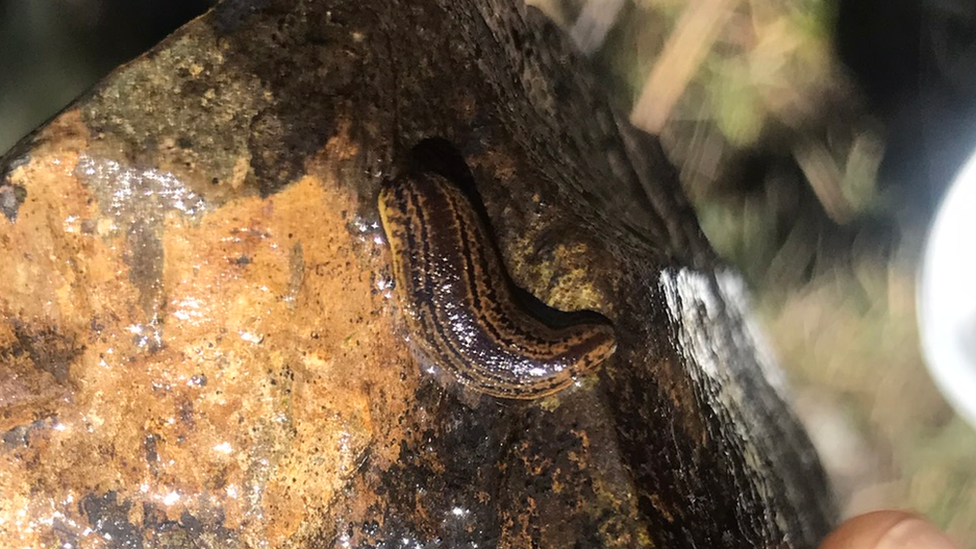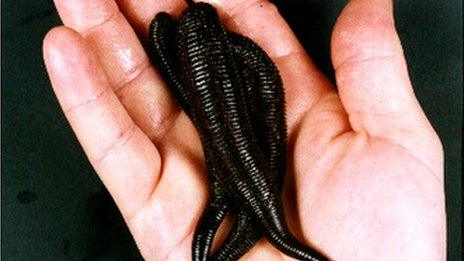Dumfries and Galloway medicinal leech find 'incredibly important'
- Published

The presence of the medicinal leech has been confirmed on the Solway Coast
One of the rarest invertebrates in Scotland has been confirmed in Dumfries and Galloway for the first time.
The medicinal leech - once used across Europe for bloodletting treatments - has been found in three ponds near Carrick Shore on the Solway Coast.
It makes the region one of only three parts of the country where they are known to exist.
Conservation group Buglife said it raised hopes they could be found at other sites in future.
The sighting was made by local naturalist, Bob Merritt, and follows unverified records from 2005 and 2008.
Buglife confirmed its presence as part of its Scotland-wide conservation programme - Species on the Edge.
Medicinal leeches can grow up to 20cm (8in) long, making them one of the UK's largest native leeches.

The leeches can grow up to 20cm (8in) in length
They can be found in a variety of freshwater habitats, including ponds, lochs, ditches, wetlands, and streams.
In Scotland, medicinal leeches have a dark brown or black upper side with yellow-grey stripes and a speckled underside.
They feed on blood from cattle, deer, amphibians, fish, and birds, and only feed every three to 12 months. They can live up to 20 years.
Once widespread, they are now known in only three areas in Scotland - mainland Argyll, Islay, and now Dumfries and Galloway - having suffered severe declines primarily due to historical overharvesting for use in medicine.

A breeding programme is starting at the Highland Wildlife Park to boost leech numbers
In the late 18th to early 19th Century, millions of the leeches were used in hospitals across Europe for bloodletting treatment.
Since that time, habitat loss and freshwater pollution have also badly affected their populations in Scotland.
Buglife conservation director, Craig Macadam, said "Medicinal leeches have an important place in our medical history but are now one of the rarest invertebrates in Scotland.
"The discovery of three new sites for this species in Dumfries and Galloway is incredibly important and gives us hope that further sites are discovered for this incredible species in the future."
Buglife is also working with the Royal Zoological Society of Scotland (RZSS) to deliver Scotland's first ever medicinal leech captive breeding programme to help save it from extinction.
They have been collected and transferred to a specially-designed facility at the Highland Wildlife Park in the Cairngorms National Park.
It is hoped they can be bred there and released back into the wild in order to boost numbers.

Listen to news from Dumfries and Galloway, follow the BBC for the south of Scotland on X, external or send your story ideas to dumfries@bbc.co.uk, external.
Related topics
- Published13 August 2013
